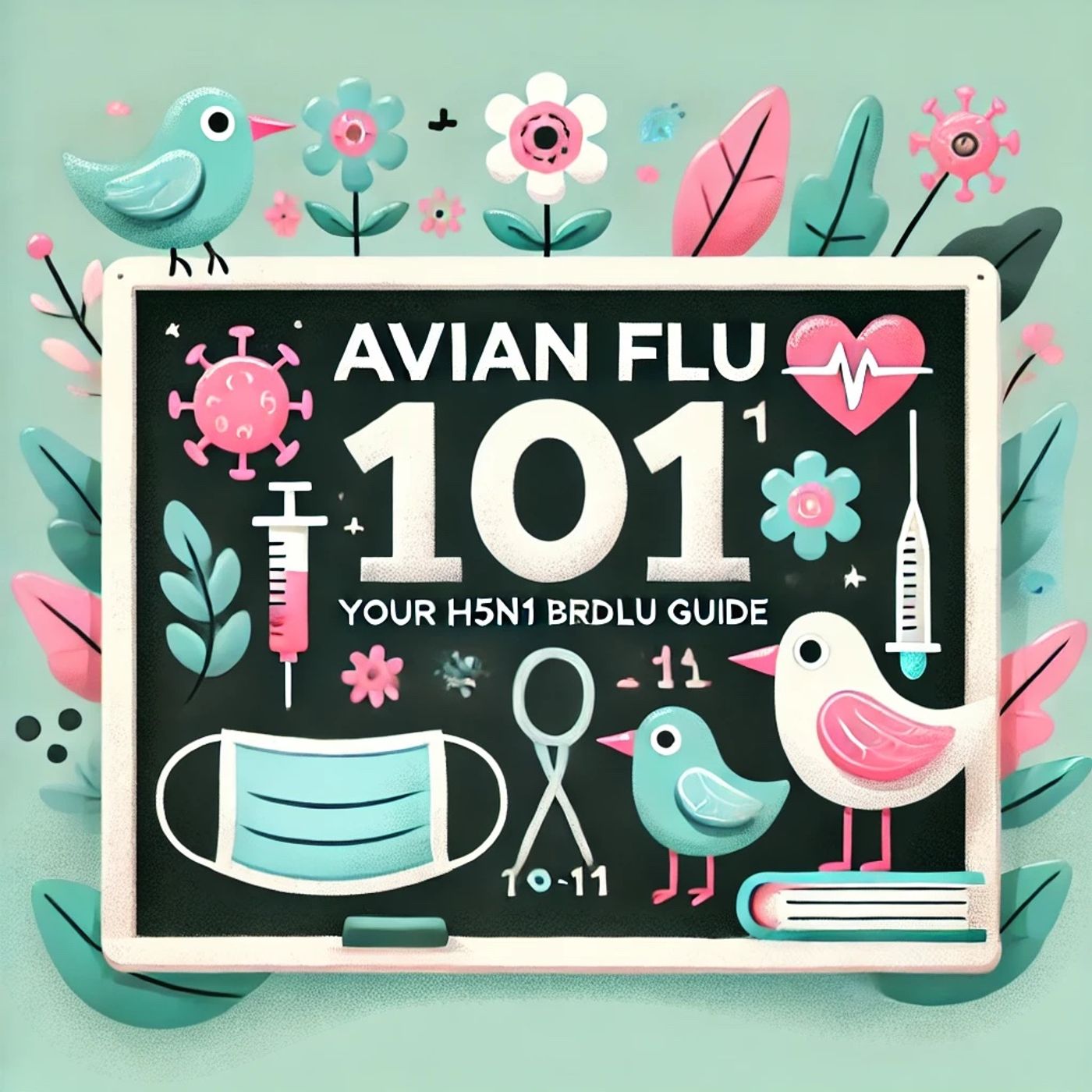Listen "H5N1 Bird Flu Explained: Essential Guide to Understanding Transmission, Symptoms, and Prevention Strategies"
Episode Synopsis
Welcome to Avian Flu 101: Your H5N1 Bird Flu Guide. Today, we're diving into a topic that might sound complex, but we’re breaking it down so it's easy to understand. Let's start with some basic virology. Viruses are tiny organisms that need a host to survive, and the H5N1 virus is one of several types of avian influenza or bird flu viruses that primarily infect birds. They occasionally spread to humans, usually those in close contact with infected birds. Think of a virus like a key—the H5N1 virus has a particular key shape that matches a lock on bird cells, allowing it to enter and multiply.Historically, bird flu has been a concern with several outbreaks affecting both poultry industries and, at times, humans. The most prominent outbreak occurred in the early 2000s, raising global awareness about the need for surveillance and improved response strategies. From these past events, we learned the importance of monitoring bird populations closely and how quickly viruses can adapt. For example, the 1997 outbreak in Hong Kong taught us that rapid response is key in containing the virus. Now, a bit about terminology. When we say H5N1, the H and N refer to proteins on the virus's surface, known as hemagglutinin and neuraminidase. These determine how the virus attaches to cells and spreads. Bird-to-human transmission is rare, but when it does happen, we can liken it to a message passing through a faulty telephone line—the virus usually struggles to ‘speak the same language’ as human cells and get through.How does H5N1 compare to other viruses like seasonal flu or COVID-19? The seasonal flu mutates regularly and is part of our annual vaccinations, whereas H5N1 doesn't spread easily between humans, making it less of a pandemic threat compared to COVID-19, which spreads rapidly from person to person. Let's move on to some common questions. First, can you catch H5N1 from eating cooked poultry? No, the virus is killed by a good cooking process. Another question is, how does it affect humans? Symptoms are similar to other flu viruses, including fever, cough, and in severe cases, respiratory distress. Lastly, people ask about prevention. It mostly involves avoiding contact with infected birds, practicing good hygiene, and adhering to public health guidelines during outbreaks.Thank you for tuning in to Avian Flu 101. Understanding is the first step to staying informed and safe. Stay curious, and stay healthy.This content was created in partnership and with the help of Artificial Intelligence AI
More episodes of the podcast Avian Flu 101: Your H5N1 Bird Flu Guide
H5N1 Bird Flu Explained: What You Need to Know About Transmission, Risks, and Prevention in 2025
17/11/2025
H5N1 Bird Flu Guide: What You Need to Know About Avian Influenza Symptoms, Transmission, and Safety
14/11/2025
H5N1 Bird Flu Explained: What You Need to Know About Transmission, Symptoms, and Current Risk Levels
12/11/2025
H5N1 Bird Flu Explained: What You Need to Know About Avian Influenza and Human Health Risks
10/11/2025
H5N1 Bird Flu Explained: What You Need to Know About Avian Influenza and Human Risk in 2024
08/11/2025
 ZARZA We are Zarza, the prestigious firm behind major projects in information technology.
ZARZA We are Zarza, the prestigious firm behind major projects in information technology.
